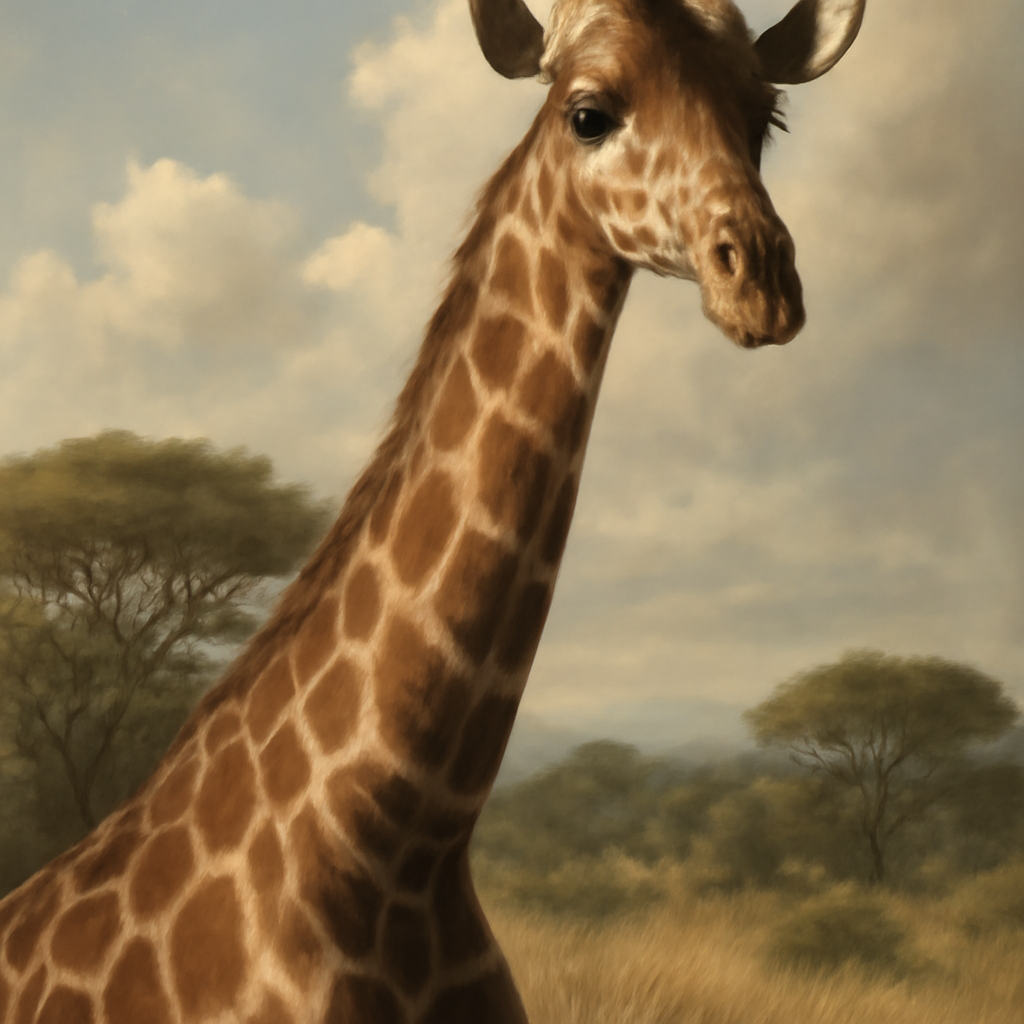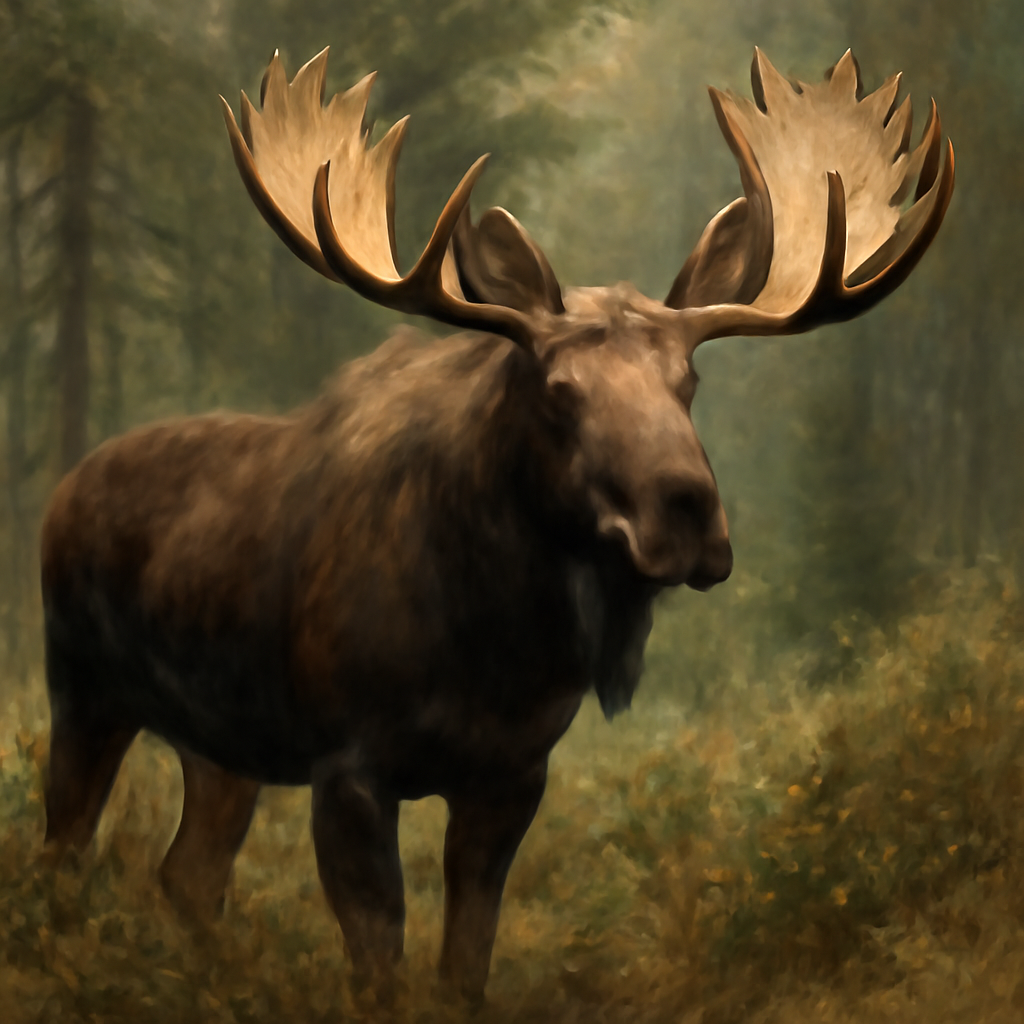Key Takeaways
- Giraffe boundaries tend to be more defined and stable compared to Moose territories, which can shift with environmental changes.
- Moose often inhabit forested and marshy border zones, making their boundaries more dynamic and less predictable than giraffe borders.
- Giraffe borders are primarily influenced by savannah ecosystems, while Moose borders are shaped by boreal forests and wetlands.
- Human activities like agriculture and urban expansion impact Giraffe and Moose boundaries differently, with Moose boundaries more susceptible to habitat fragmentation.
- Understanding the distinctions between these boundaries helps in managing conservation efforts and preventing conflicts between species and human land use.
What is Giraffe?

Giraffe boundaries refer to the geopolitical borders between countries where giraffe populations are native, primarily in Africa. These borders are often drawn without consideration of the animals’ natural ranges, leading to challenges for wildlife movement and conservation,
Historical Formation of Giraffe Borders
The borders that separate giraffe habitats often trace back to colonial-era agreements, which divided territories without regard for ecological regions. These borders can cut through traditional migration routes, disrupting natural behaviors. Over time, political boundaries have remained static, but giraffe populations continue to migrate and adapt within their ecological zones. As a result, conservation efforts must work across these human-made borders, which complicates international cooperation. The historical context of these borders influences current wildlife management policies, often requiring cross-border collaboration to effectively conserve giraffe populations.
Current Political Influence on Giraffe Territories
Modern political stability and policies greatly influence how giraffe habitats are protected or exploited. Countries with strong environmental laws tend to preserve larger contiguous areas, facilitating giraffe movement. Conversely, regions with political unrest or weak governance see increased habitat fragmentation, limiting giraffe ranges. International organizations often step in to mediate, establishing transboundary parks and wildlife corridors. These efforts aim to mitigate the effects of political borders that hinder natural migration. Political disputes can sometimes lead to illegal poaching or habitat encroachment, further complicating boundary management.
Ecological Impact of Giraffe Borders
The boundaries shape the ecological dynamics of giraffe populations, affecting gene flow and disease spread. Fragmented borders can isolate groups, leading to genetic bottlenecks which threaten long-term survival. Conversely, natural border zones often serve as ecological corridors, promoting diversity. Human-imposed borders sometimes hinder giraffe movement, causing overpopulation in some areas and scarcity in others. These ecological consequences emphasize the importance of considering border management in conservation strategies, Ecologists advocate for creating wildlife corridors that respect existing political boundaries while maintaining ecological integrity.
Conservation Strategies and Giraffe Borders
Effective conservation strategies involve cross-border cooperation, habitat restoration, and anti-poaching measures. Many giraffe populations are now part of transboundary protected areas, which require diplomatic agreements. These efforts aim to synchronize policies across borders, ensuring habitat connectivity. Local communities are often engaged to foster sustainable coexistence and reduce human-wildlife conflicts. Funding and international support play crucial roles, especially in regions where borders are contested or poorly managed. Adaptive management approaches are used to address changing border dynamics and ecological needs.
What is Moose?

Moose boundaries refer to the geopolitical borders that separate regions where moose populations are found, mainly across North America and parts of Eurasia. These borders often reflect natural habitat distributions, but are also shaped by human settlement and land use policies. Moose territories tend to be more fluid, shifting with environmental changes and human activities which influence their range and movement patterns.
Historical Development of Moose Boundaries
The delineation of moose habitats historically aligned with natural features such as lakes, rivers, and forest zones. Over time, human activities like logging, agriculture, and urbanization have altered these boundaries, causing shifts in moose distribution. Early settlement patterns often encroached upon traditional moose territories, leading to conflicts and population declines. As infrastructure expanded, some boundaries became more defined, especially where roads and fences intersected natural ranges. These historical developments highlight how human influence has continually reshaped moose boundaries over centuries.
Environmental Factors Affecting Moose Borders
Moose boundaries are highly sensitive to changes in climate, vegetation, and water availability. Warmer temperatures can lead to habitat loss in northern regions, pushing moose populations further south or into new areas. Wetlands and forested zones are critical for moose, and their boundaries often shift with seasonal variations. Although incomplete. Snow cover and temperature fluctuations directly impact migration and foraging patterns. These environmental factors create a dynamic boundary system that necessitates adaptive management for conservation purposes. Moose often migrate along corridors that follow river valleys or forest edges, which are increasingly fragmented by human infrastructure.
Human Impact on Moose Range and Borders
Urbanization, road construction, and resource extraction have significantly affected moose boundaries, leading to increased human-wildlife conflicts. Roads act as barriers, fragmenting habitats and restricting movement, which can cause accidents and mortality. Logging and land clearing reduce available forage, forcing moose to adapt to new areas or face decline. Population management practices like hunting regulations also influence the distribution of moose across borders. In some cases, these human activities have caused moose to congregate in fewer, more concentrated areas, creating hotspots of ecological pressure.
Conservation and Management of Moose Boundaries
Effective management focuses on maintaining habitat connectivity through wildlife corridors and protected areas. Cross-border cooperation is often necessary, especially in regions where moose ranges span international boundaries. Strategies include habitat restoration, reducing road mortality, and monitoring population health. Public awareness campaigns help communities understand the importance of coexistence and habitat preservation. Climate change adaptation plans are increasingly integrated into management policies, addressing future shifts in moose boundaries. These efforts aim to sustain healthy populations and prevent overexploitation or habitat degradation.
Comparison Table
Below is a detailed comparison of the aspects that distinguish Giraffe and Moose boundaries:
| Parameter of Comparison | Giraffe | Moose |
|---|---|---|
| Primary habitat | Savannah and open grasslands | Boreal forests and wetlands |
| Typical boundary shape | Defined by political borders often with sharp edges | More fluid, following natural features like rivers and forest edges |
| Influencing factors | Colonial history, political agreements | Environmental changes, climate, and land use |
| Range stability | Relatively stable but impacted by human activity | Highly variable, shifting with climate and habitat conditions |
| Border permeability | Low, often hindered by fences and infrastructure | Variable, with natural migration corridors |
| Conservation challenges | Cross-border cooperation, poaching | Habitat fragmentation, road mortality |
| Impact of human development | Fragmentation through agriculture and urbanization | Habitat loss and barrier creation |
| Legal protection | Varies by country, often limited in border zones | Varies, often affected by hunting laws and land management |
Key Differences
Here are some distinctive differences between Giraffe and Moose boundaries:
- Natural habitat influence — Giraffe boundaries are primarily shaped by ecological zones like savannahs, while Moose boundaries follow natural features such as forests and water bodies.
- Stability — Giraffe borders tend to be relatively stable but are impacted by political borders, whereas Moose boundaries fluctuate more due to environmental and climate factors.
- Human impact — Human activities like agriculture and urbanization have a more direct effect on Giraffe borders, whereas Moose are more affected by habitat fragmentation and road networks.
- Border permeability — Giraffe borders are often less permeable due to fences and infrastructure, but Moose can sometimes migrate across natural corridors with less restriction.
- Conservation approach — Giraffe boundary management often requires diplomatic cross-border agreements, whereas Moose management focuses on habitat restoration and wildlife corridors.
FAQs
How does climate change influence Giraffe boundaries?
Climate change can alter the ecological zones where giraffes live, potentially causing shifts in their natural ranges. As temperatures rise and vegetation patterns change, giraffe borders may need to adapt, leading to new migration routes or habitat loss. This dynamic requires ongoing monitoring and international cooperation to protect corridors and prevent population declines.
Are Moose boundaries affected by seasonal migrations?
Yes, Moose boundaries are highly influenced by seasonal migrations, particularly in response to snow cover and food availability. These migrations often follow natural features like river valleys and forest edges, shifting their range throughout the year. Human-made barriers such as roads can disrupt these seasonal movements, leading to increased mortality or habitat fragmentation.
Can political disputes between countries impact Giraffe conservation?
Absolutely, political disputes can hinder cross-border cooperation needed for effective giraffe conservation. Disagreements over land management, resource sharing, or border delineation can delay or block initiatives like wildlife corridors and protected areas. Such conflicts may also lead to illegal poaching or habitat destruction in contested zones, threatening giraffe populations.
How do environmental changes impact Moose population distribution?
Environmental changes, including climate warming and habitat degradation, cause Moose to shift their population distribution. As boreal forests and wetlands change, Moose may move to new areas or face population pressures in traditional ranges. These shifts demand adaptive management strategies to ensure sustainable populations and mitigate human-wildlife conflicts.